The Doctor has been battling with some of his enemies for hundreds (thousands?) of years, and I’m sure he hasn’t forgotten the reason for the individual conflicts and how they got started. But, for the rest of us, here’s a brief guide to a few villains that rattle the Time Lord’s cage.
Cybermen
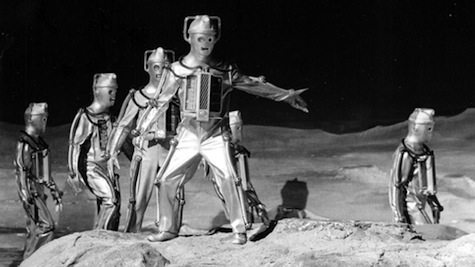
Cybermen come from the planet Mondas and at one time were flesh and blood until they began experimenting with swapping their organs and limbs for artificial parts in a means of surviving. Over their long, tumultuous history they became more machine in nature and since there are fewer in numbers, than say the Daleks, they are always looking to snatch humans and upgrade them into their ranks. There have been many different versions of Cybermen over the years but all seem to have the basic thrust to preserve their species by eliminating or adapting anyone in their path. So, because The Doctor has battled them (first time in 1966’s The Tenth Planet) and won on numerous occasions, that makes him their enemy.
Daleks
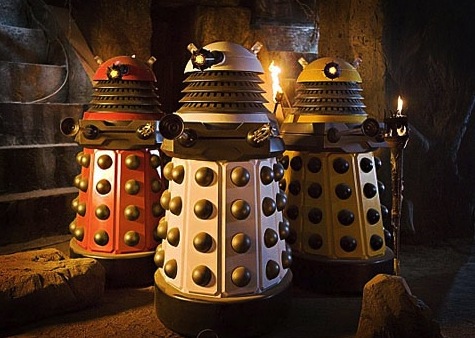
Blame it on Davros, the scientist, who genetically altered his own race known as Kaleds during their war against the Thals. He outfitted them with their stout little tank shells and erased all emotion except hate, giving them an annoying habit of repeating “Exterminate!” when they prepare to destroy anyone. The First Doctor (William Hartnell) encountered them in 1963’s The Daleks and nearly all the Time Lord incarnations have been fighting them ever since. Considered the The Doctor’s #1 enemies, but why do they despise him? For starters they want to purge the universe of all non-Dalek life but he continually stops them at every turn, and on one occasion he almost wiped them out of existence.
Great Intelligence
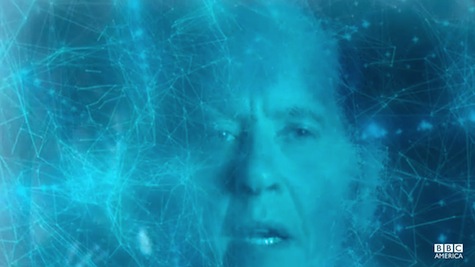
The Great Intelligence has no actual physical shape (in 1995’s Downtime he even admits he has no idea of what he originally looked like) but is still able to communicate. His main mission is to—you guessed it—take over the universe. The Second Doctor referred to it as a “Formless, shapeless thing, floating out in space like a cloud of mist, only with a mind and will.”
He is usually assisted by stooges like the Yeti, Whisper Men, Spoonheads, and my personal favorite, The Snowmen. The Great Intelligence first appeared in 1967’s The Abominable Snowmen but was retired a couple years later due to a copyright disagreement between the creators of the character and the BBC. The Great Intelligence returned in a big way with the incomparable Sir Ian McKellen in 2012’s “The Snowmen.”
Ice Warriors (and Ice Lords)
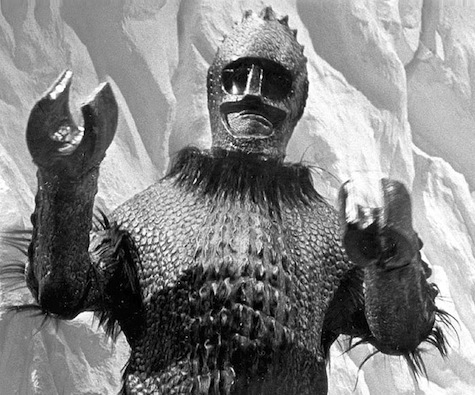
These towering, humanoid-reptilian aliens are—like the Daleks, Cybermen, Great Intelligence, and The Master—trying to take over the Earth, but they have a much better reason than most because they were originally from Mars before that planet died. Not entirely evil in the way of Daleks and Cybermen, and some Warriors have actually helped the Doctor (1972’s The Curse of Peladon).
Writer Mark Gatiss (“Victory of the Daleks,” “Robot of Sherwood,” etc.) was a fan of the original Ice Warriors and championed their return in 2013’s “Cold War” where The Doctor and Clara Oswald find on a submarine an Ice Warrior named Skaldak who believes he is the last of his kind. That episode has the distinction of showing an Ice Warrior out of its armor plating which is a source of great shame for the species. That Warrior, Grand Marshall Skaldak, only did so out of desperation and as a last resort, believing he had nothing else to live for.
The Master
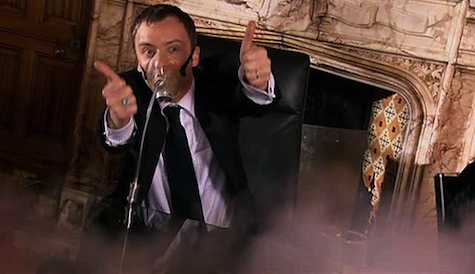
At the age of eight The Master was forced to peer into the Untempered Schism, a gap in the fabric of space and time, which makes some individuals go stark raving mad and that is exactly what happened to The Master. His goal is also to rule the universe though he puts it more scientifically in 1976’s The Deadly Assassin as “the master of all matter.” However, he also has a personal vendetta with The Doctor who he has known since childhood. The Master gets rather emotional with Ten (David Tennant) in “The End of Time” when they both suspect they wouldn’t be much without the other. The original actor to play the part was Roger Delgado and his unexpected death in 1973 was given as a reason by Jon Pertwee, a close friend, as to why he left the show. Five other actors have also played the Master including Peter Pratt, Anthony Ainley, Eric Roberts, Derek Jacobi, and John Simm.
The Rani

The late, fabulous Kate O’Mara (1939-2014) played the renegade Time Lord called Rani and, yes, her goal was to be ultimate ruler, as well. But in a curious turn, her interest in carrying out various scientific tests, including the manipulation of other species’ biochemical makeup, had become an obsessive pastime. She was banished from her home planet after some of her experimental mice overgrew and ate a cat belonging to the Lord President.
Rani has so far appeared in only two serials—The Mark of the Rani (1985) and Time and the Rani (1987)—and a final appearance in 1993’s Dimensions in Time. Rani’s TARDIS, unlike The Doctor’s, is fully functional as a chameleon-like vehicle. It’s interesting to note she is roughly the same age as The Doctor and was, basically, a youthful friend of his as was The Master.
Trivia: Rani means “Queen” in Hindi.
The Silence
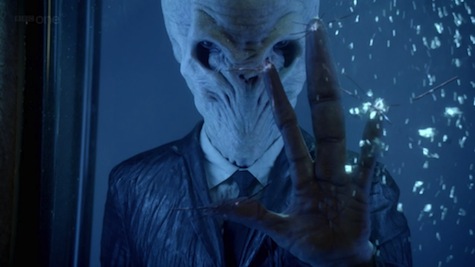
One of the most powerful enemies The Doctor has ever faced and first introduced in 2011’s “The Impossible Astronaut.” Powerful because once you look away from The Silence you forget their presence and history. They are completely erased from one’s mind. The Doctor and his team (including FBI agent Canton Delaware) in due course begin marking their skin in order to “remember” their encounters. According to Wikipedia, a few critics noticed The Silence resembled Buffy the Vampire Slayer’s “the Gentlemen” from the “Hush” episode. However, show producer and lead writer Stephen Moffat says he drew inspiration from Edvard Munch’s famous painting The Scream in addition to the Men in Black.
Memorable scene from “Day of the Moon” (2011) has Canton asking a Silent if he’s armed. The creature responds, “This world is ours. We have ruled it since the wheel and the fire. We have no need of weapons.” Canton then draws his weapon and wounds the Silent yelling, “Welcome to America.”
Sontarans
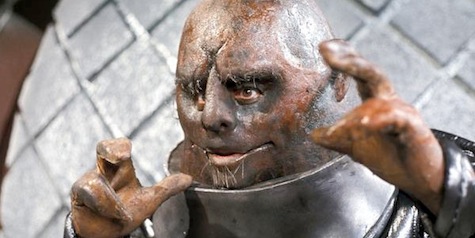
“Sontarans never do anything without a military reason.”
–The Fourth Doctor, The Sontaran Experiment
An extraterrestrial race of humanoids who live for no other reason than to battle and kill. They all pretty much look the same due to cloning instead of sexual reproduction. They are shorter than humans but extremely stocky and stronger than an Earthling. In “The Sontaran Stratagem” (2008) they are humorously described as resembling “a talking baked potato.” And maybe it’s a little easy putting them on this list because they just don’t hate the Doctor for thwarting their war faring plans but they pretty much despise anyone who’s not a Sontaran. An exception is the continuing education of Strax—a likable twelve-year-old (adult in Sontaran years) who has a hard time telling human gender which makes for numerous chuckles with every appearance. He’s paying his dues as a nurse (after his failure to stop The Doctor in the Sontarans attempt to invade Earth) and he joins Madame Vastra and her wife Jenny Flint to make a formable 19th century defense against all forms of wrongdoing.
The Valeyard

“There is some evil in all of us, Doctor—even you. The Valeyard is an amalgamation of the darker sides of your nature, somewhere between your twelfth and final incarnation, and I may say you do not improve with age.”
–The Master
So far, The Valeyard has only appeared (not counting other tie-in media) in all four segments of The Trial of a Time Lord (1986), featuring the Sixth Doctor played by Colin Baker. That seminal episode features The Doctor being accused of conduct unbecoming of a Time Lord, chiefly an “incorrigible meddler in the affairs of other peoples and planets.” The Valeyard is a Time Lord and his name stands for “learned court prosecutor” (though The Doctor snidely refers to him as “the Boneyard” and “the Scrapyard”), and in “The Name of the Doctor” (2013) the Great Intelligence says that “Valeyard” is one of the names by which the Doctor will be referred to before the end of his life. Considering we are currently at the twelfth incarnation (yeah, I know there’s the War Doctor) I’m wondering if The Valeyard is going to play a bigger role in the Peter Capaldi era.
Vashta Nerada
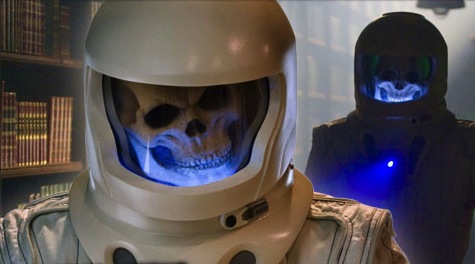
The Tenth Doctor: Almost every species in the Universe has an irrational fear of the dark. But they’re wrong. ’Cause it’s not irrational. It’s Vashta Nerada.
Donna Noble: What’s Vashta Nerada?
The Tenth Doctor: It’s what’s in the dark. It’s what’s always in the dark.
More precisely, the Vashta Nerada are microscopic hungry killers who live in clusters, move at lighting speed to devour their prey. Ten refers to them as “piranhas of the air” and admits he has never seen an infestation on the level he’s encountering in 2008’s “Silence in the Library.” So, technically, they don’t have a personal beef with the time lord but they are some of the worthiest ‘villains’ he’s ever faced. Memorable scene has him tossing a chicken drumstick into a shadow and watching how quickly the flesh is devoured.
Weeping Angels
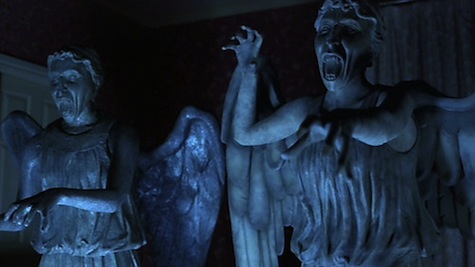
Winged Humanoids that The Doctor describes as “the only psychopaths in the universe to kill you nicely.” Because you don’t really die—though they haven’t been above snapping a neck if their plans get off track—but are zapped into the past and then they live off your energy of your life that would have been in the present. First introduced in the intense “Blink” and consistently voted by Whovians as some of the most chilling episodes of the show’s half century history. The Angels don’t seem to have a master plan other than gaining the energy they seek to flourish—essentially survivalists. In “The Time of Angels” Eleven describes them to an initially unconcerned Amy Pond as “The deadliest, most powerful, most malevolent life form evolution has ever produced.” Soon enough they claim her and her husband Rory in the tear-jerker, “The Angels Take Manhattan.”
Some trivia from Wikipedia: “Blink” was written by Steven Moffat and was based on his short story called “‘What I Did on My Christmas Holidays’ by Sally Sparrow.”
Zygon
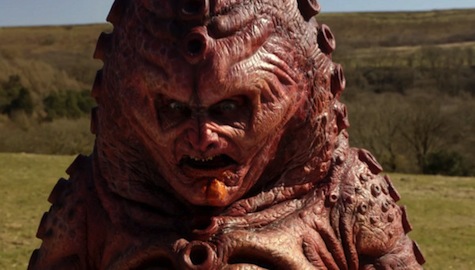
Some real ugly here: Zygons are shape-shifting creatures with deep inset faces and suckers over their bodies. They first appeared in 1975’s Terror of the Zygons and like the Ice Warriors want to conquer Earth because their own planet was destroyed. Well, at least that seems more reasonable than universe megalomaniac conquest, right? The Tenth Doctor (David Tennant) memorably made out with a Zygon in the shape of Queen Elizabeth I that led to this humorous exchange with the Eleventh Doctor played by Matt Smith:
Eleven: One of those was a Zygon?
Ten: Yeah.
Eleven: Big red rubbery thing covered in suckers.
Ten: Yeah.
Eleven: Venom sacs in the tongue.
Ten: Yeah I’m getting the point, thank you.
Eleven: Nice.
So who would you pick as your favorite Time Lord villains? Which ones would you like to see return and who could you do without for a while? For me, my overall favorite is the Cybermen and I would like a long break from the Daleks.
David Cranmer is the publisher of the BEAT to a PULP webzine and books and editor of the recent collections The Lizard’s Ardent Uniform and Other Stories and A Rip Through Time: The Doctor, the Dame, and the Device.










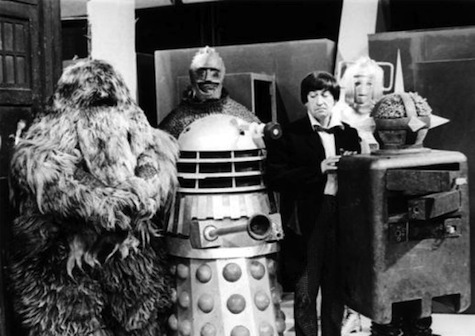
I always liked the Cybermen, because they’re not, strictly speaking, evil. They genuinely think everyone will be better off as Cybermen. If the Daleks are exaggerated Nazis, the Cybermen are exaggerated communists. Also, their first design was super creepy, especially their human hands.
I also like the Master, especially as played by Delgado, because he and the Doctor genuinely seemed to like each other and look forward to trying to outwit each other. And other than being an evil mastermind, the Master was also a pretty normal guy; I remember him kicking his feet up on a spaceship control console and reading a book during transit after he’d taken the ship hostage.
There was a lot of potential with the Rani — she unfortunately just happened to have some really weak storylines to work with. It’s very rare to see a female version of the “scientist overlord” archetype, and I liked that her ambitions were fairly small-scale compared to some other villains. The Master wants the entire universe, but the Rani would be pretty happy with one or two planets to use as her laboratory, so she gets kind of annoyed that the Doctor goes out of his way to stop her.
My favorite recurring villains might be the Ice Warriors, though, because they might be the only ones who’ve pretty much transitioned from “evil” to just “warlike and dangerous, but honorable and willing to give diplomacy a chance.” Kind of annoyed me when RTD said he considered them too silly to bring back (this from the guy who created the Slitheen), and was glad to see them come back anyway in “Cold War.”
Others that could do with a return…could be interesting the see the Mara or the Fendahl again. I’d really like to see Sutekh make an appearance, considering his actor has already provided a voice for the revival series (the Beast in “The Impossible Planet”) and Sutekh showed up in the Faction Paradox audios. (I’d absolutely love to see Faction Paradox on the show, speaking of villains, but there’s basically zero chance of that happening.)
…well that was a longer post than I thought.
Geoffrey Beevers played the Master in “The Keeper of Traken,” although he was billed as “Melkur” to conceal the twist of who he really was. The Master was also briefly played by Gordon Tipple at the beginning of the 1996 movie (he originally did the opening narration, but all his lines were cut) and by William Hughes in the flashbacks to his childhood in “The Sound of Drums” and “Last of the Time Lords.”
@1: I couldn’t agree more on the Fendahl’s return. A personal favorite. And that’s a unique take on the Daleks, Cybermen, Nazi’s, and communists. I’ll have to chew that over a bit more.
@2: I didn’t add Beevers on purpose because that can still come as a wonderful twist for first time viewers of that classic episode. Though only a nerd like myself would attempt to conceal a 33 year-old-spoiler. Thanks for adding the other two Master cameo shots.
Just a correction : Sir Ian McKellen played the Great Intelligence in “The Snowmen” in 2012, not in 2007 as indicated in the article.
It’s also neat how Beevers plays the Master in the Big Finish audios because he was the least-remembered actor in the role and managed to catch people by surprise a second time.
Just one nit to pick – the Zygon in question wasn’t disguised as Queen Victoria, but rather as Queen Elizabeth I.
@5: True enough. @6: Oh, my goodness! Of course, you are correct. I will get that changed. Thanks.
@7: Fixed! Queens sorted–thanks :)
The Daleks, of course, were the first aliens other than the Doctor and Susan to appear on the show, and the first recurring villains (returning in 1964’s Dalek Invasion of Earth).
Also, according to the novels, the Great Old Ones exist in the Whoniverse and the Great Intelligence is none other than Yog Sothoth!
@9: Yog Sothoth, eh? H.P. Lovecraft is a nice touch.
It’s difficult not to think that, given you have the Doctor and the Master, that there must also be a Bachelor out there somewhere. And possibly a Fellow?
Please no more Dalek, pretty well done with Exterminate, Exterminate.
I’d kind of understand the bind they’re in with overusing the Daleks if there’s any truth to the widespread rumor that the BBC’s contract with the Nation estate means they have to include them at least once per season, but as far as I’ve seen, there’s no official confirmation of this (though they have made at least one appearance per season). I agree, they need to give a couple of major villains a rest and let them simmer a while.
It’d be neat to see the Mandragora Helix again too.
Heck, if they did another episode with the Fendahl, they could have Benedict Cumberbatch in it — his mom played the Fendahl’s chosen human vessel in “Image of the Fendahl,” and there was a lot about tampering with humanity’s genetic destiny in there….
The Queen has been sorted, but the date for “The Snowmen” is still wrong.
Why no mention Geoffrey Beevers’ Master? Counting the audios, he’s played the character more times than Simm, Pratt, Roberts or Jacobi.
@13: Fascinating history and I hadn’t heard of having to feature a Dalek episode each season. If true, that’s just plain crazy.
@14: The Snowmen was first broadcast on 12/25/12.
@15: Check back on my #3 comment. I wasn’t counting Big Finish audios (maybe I should have) and I left out The Keeper of Traken on purpose.
Actually I hadn’t looked at that quote about the Valeyard since those episode and they don’t say what everyone has always thought. They mearly say that between the Doctor’s 12th and final incarnation will be the Valeyard. So there are 11 possible incarnations coming up which could be him.
@16: At the time of my post, the article still said “2007’s ‘The Snowmen.'” I see this has now been corrected.
Is the Rani still alive? If so does anyone think she is Missy?
@19: Yes and Rani was my first guess when Missy was introduced this season.
I’ve always loved the Rani, and have longed for her reintroduction. However, I despise the Weeping Angels and think they’re lame.
@21.LadyBelaine
Thank you! I thoght the Angels a fantastic plot device when they were first introduced, with “Blink” I especially liked the way it was filmed, no special effects, just strobe lighting and statue(s) that creep up on you.
and they were a good surprise in “the Time of Angels/Flesh and Stone” but even there they dragged on too long
My favorite villain out of allll the shows is of course the Weeping Angels..they are beautiful yet so scary and deadly.
The cyberman are my favorite villain because they have armor and weapons.
Sir Ian McKellan???????? I always thought that The Great Intelligence was played by Richard E. Grant?????
@26/David: McKellen voiced the Great Intelligence in “The Snowmen,” and Grant played Simeon, an ally (or possibly the creator?) of the Intelligence who ended up being possessed by it. So they both played the role.